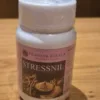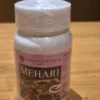Vaca
|
Botanical Name |
Acorus Calamus |
|
Family |
Araceae |
|
Sanskrit |
Ugra Gandha, Golomi, Sadgrandha |
|
English |
Sweet Flag |
|
Hindi |
Vacha |
|
Kannada |
Baje |
|
Malayalam |
Vayambu |
|
Telugu |
Vasa |
|
Tamil |
Vasambu |
|
Marathi |
Vekhand |
Distribution
Cultivated In Wet Places In India.
|
Parts Used |
Rhizome |
|
Dose |
Churna:125-500mg |
Chemical Constituents
Acolamone, acorenone, acoramone, acorone, azulene, cadalene, calacorene, calamine, calamenole, calamone, eugenol, acoric acid etc
Ayurvedic Properties
|
Quality (Guna) |
Laghu, Tikshna |
|
Taste (Rasa) |
Katu, Tikta |
|
Metabolism (Vipaka) |
Katu |
|
Potency (Virya) |
Ushna |
|
Impact (Prabhava) |
Lekhaniya, Medhya |
Pharmacological Action
- Hypotensive: this action helps in curing blood pressure related problems.
- Its anticulvulsant action helps in curing epilepsy.
- Carcinogenic property helps in curing different kinds of malignant and benign growths in the body.
- It is an insecticidal so the fumes of the rhizome helps in warding off the insects and certain rodents from houses.
- Antimicrobial and antibacterial property helps in preventinf inflammations and certain infections in the body.
Therapeutic Uses
- Amlapitha: vaca powder is taken with honey and jaggery.
- Apasmara: vaca powder should be taken with honey and ghee for 3 days with milk as anupana.
- Sopha and vrddhi: the paste of vaca and sarsapa may be applied locally.
- Vocal improvement: paste of vaca will be applied on tongue and swallowed to improve voice in kids.
- Combination of vacha, shankhapushpi and brahmi with honey is very much helpful in epilepsy and mental retardation.
- A pinch of vacha with a glass of warm water helps in digestive disorders like intestinal worms, flatulence and indigestion etc.
Some of the common formulations
- Vacadi churna
- Vacadi ghrita
- Bala chaturbhadra churna
- Vacavalehya.




